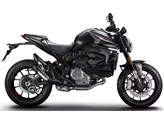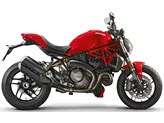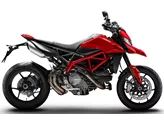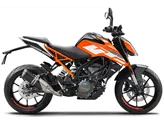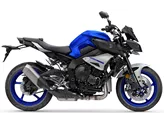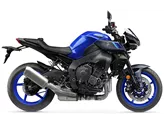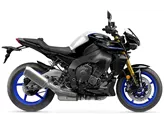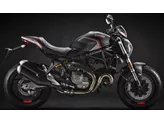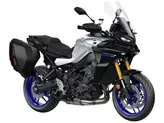Ducati Monster 2023 vs. Yamaha MT-10 2017
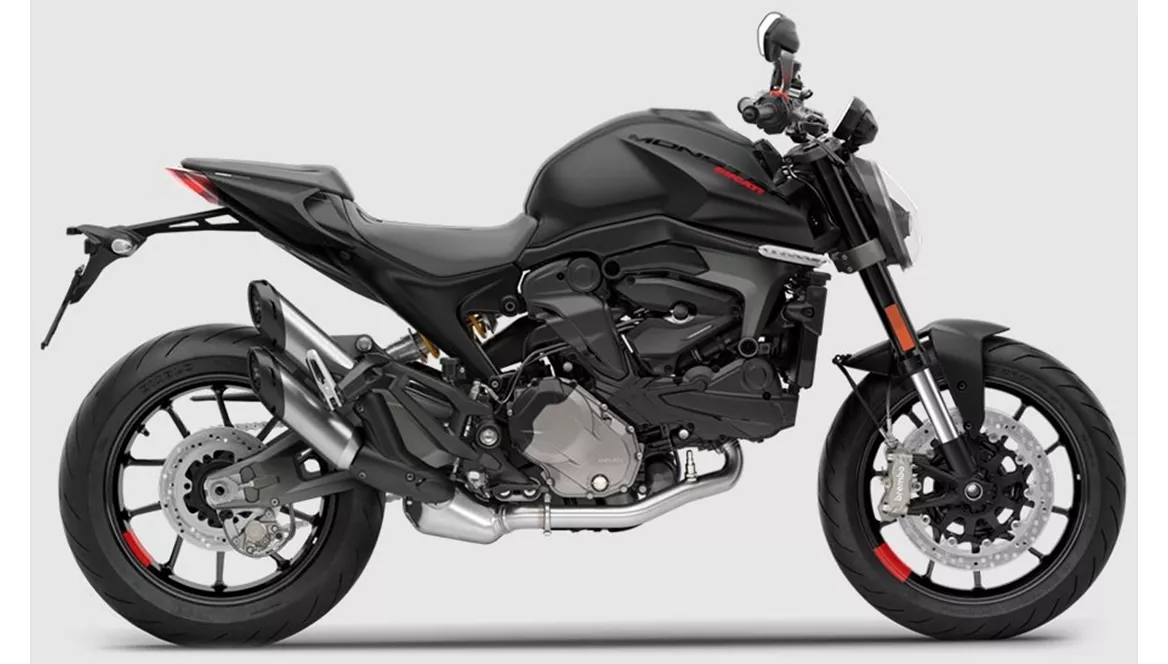
Ducati Monster 2023

Yamaha MT-10 2017
Overview - Ducati Monster 2023 vs Yamaha MT-10 2017
When comparing the Ducati Monster 2023 and the Yamaha MT-10 2017, it is clear that both bikes have their own unique strengths and weaknesses.
Starting with the Ducati Monster 2023, it boasts a V-twin engine with 111 HP and 93 Nm of torque. This engine provides a charismatic power delivery that is typical of Ducati. The bike also features a comfortable seating position, allowing for long rides without discomfort. The braking system is responsive and provides good stopping power. The Monster 2023 is known for its agile handling, making it a joy to ride on twisty roads. Additionally, the bike is equipped with high-quality components and a comprehensive electronics package, including riding modes, cornering ABS, launch control, ride by wire, quickshifter, traction control, and anti-wheelie. These advanced rider assistance systems enhance the overall riding experience and safety. The Monster 2023 also features a sleek aluminum frame and suspension components, contributing to its overall performance and aesthetics. The bike has a front tire width of 120 mm and a rear tire width of 180 mm, both with a diameter of 17 inches. It has a wheelbase of 1474 mm and a seat height of 775 mm. The kerb weight, including ABS, is 188 kg, and it has a fuel tank capacity of 14 liters.
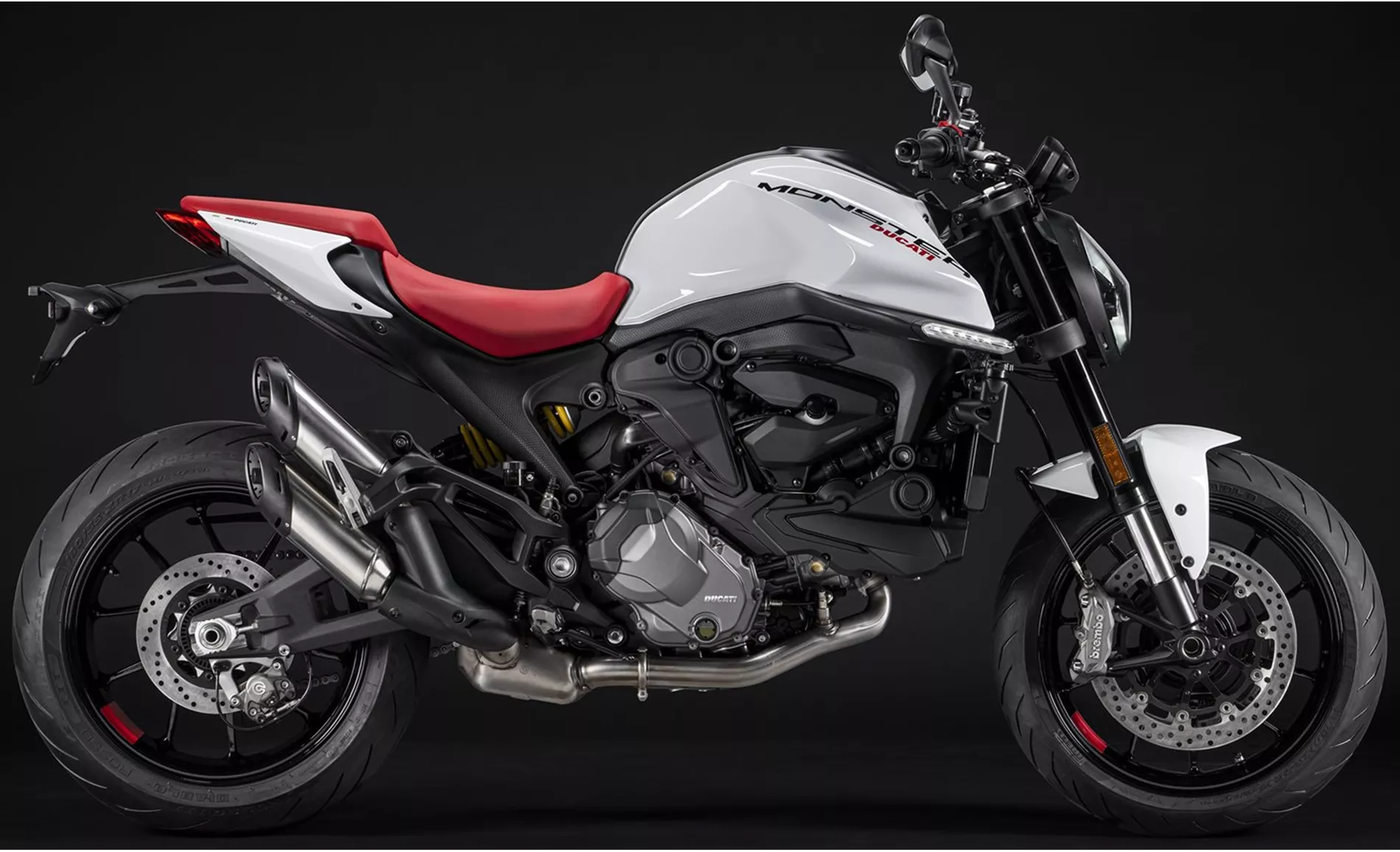
Ducati Monster 2023
On the other hand, the Yamaha MT-10 2017 is equipped with an inline-four engine that produces 160 HP and 111 Nm of torque. The engine delivers great sound and has excellent response. The bike offers a comfortable seating position, even on long tours, and provides pleasant wind protection. The overall package of the MT-10 is well-balanced, despite its radical looks and wicked sound. The front suspension consists of an upside-down telescopic fork, and the rear suspension is a swing arm with a monoshock. Both suspension components are made of aluminum, contributing to the bike's performance. The frame of the MT-10 is also made of aluminum, specifically a Deltabox frame. The front brakes are double disk with a diameter of 320 mm. In terms of advanced rider assistance systems, the MT-10 is equipped with ABS and traction control. The bike has a front tire width of 120 mm and a rear tire width of 190 mm, both with a diameter of 17 inches. It has a wheelbase of 1400 mm and a seat height of 825 mm. The kerb weight, including ABS, is 210 kg, and it has a fuel tank capacity of 17 liters.
While both bikes have their own strengths, there are also some weaknesses to consider. The Ducati Monster 2023 has been reported to have a jerky engine at low revs, which can be a drawback for some riders. Additionally, the front fork is tuned too softly, which may affect the bike's handling in certain situations. Another weakness is that the Monster 2023 no longer has the iconic trellis frame, which has been a defining feature of the Monster lineup.

Yamaha MT-10 2017
As for the Yamaha MT-10 2017, one weakness is that the seating position is too inactive on the racetrack, which may limit its performance in that setting. The chassis and ride assistance systems of the MT-10 are also not on the same level as some other powernakeds, which may be a drawback for riders seeking the highest level of performance.
In conclusion, both the Ducati Monster 2023 and the Yamaha MT-10 2017 offer their own unique features and characteristics. The Monster 2023 excels in terms of its powerplant, seating position, braking system, handling, and advanced rider assistance systems. However, it does have some weaknesses in terms of engine performance, suspension tuning, and the absence of a trellis frame. On the other hand, the MT-10 2017 impresses with its sound, wind protection, engine response, and overall balance. However, it falls short in terms of seating position on the racetrack and the level of its chassis and ride assistance systems. Ultimately, the choice between these two bikes will depend on the rider's preferences and priorities.
Technical Specifications Ducati Monster 2023 compared to Yamaha MT-10 2017
Pros and Cons in comparison
Pros and Cons in comparison
Ducati Monster 2023
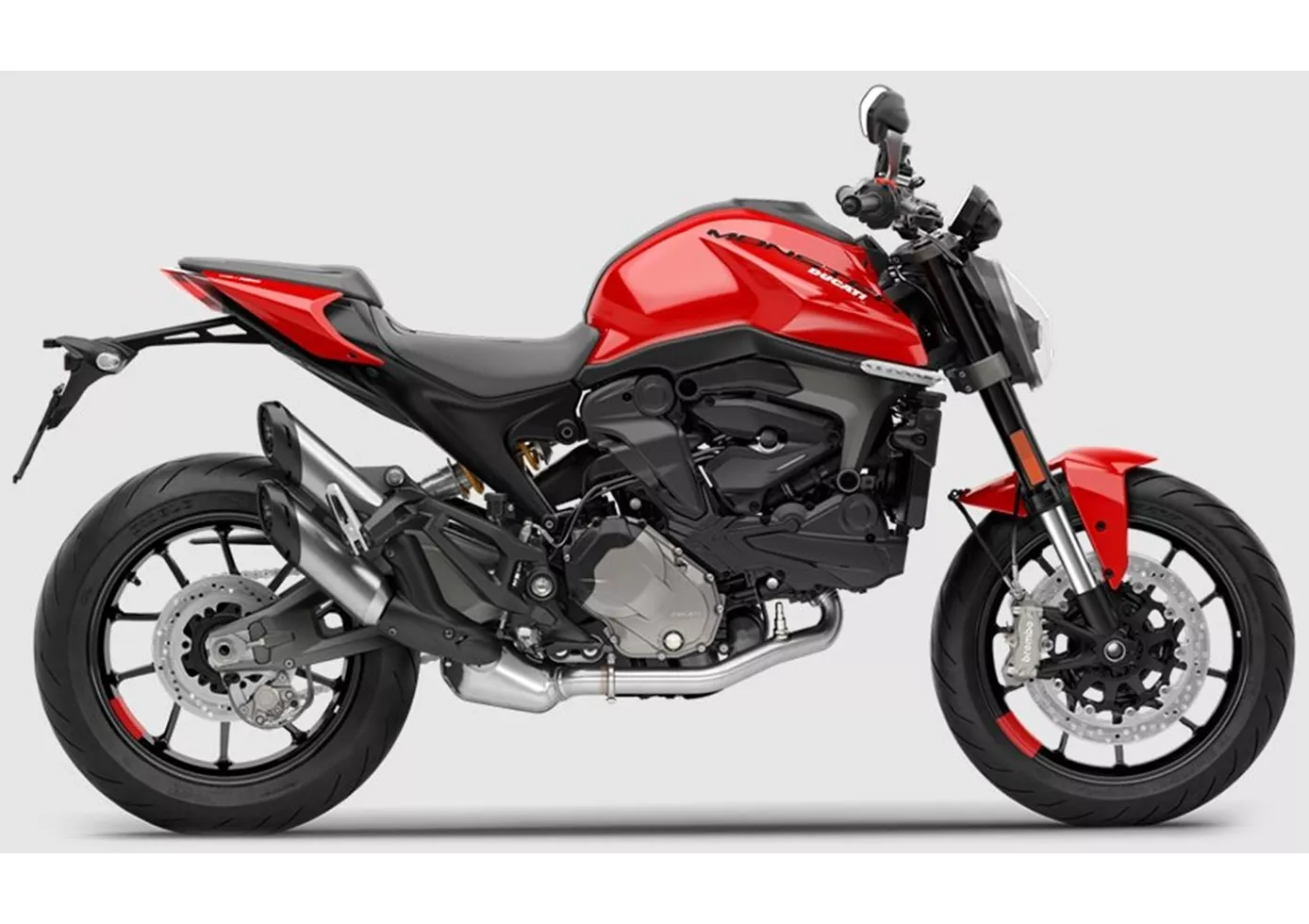
You can always argue about the looks and the lack of a trellis frame, but the current Monster is anything but ugly. Basically, it would be a great everyday naked bike with pleasant ergonomics and a braking system that does not surprise even the inexperienced. The rather soft chassis can also be considered an acceptable compromise, but for a Ducati it is rather surprising that at least the front fork was not tuned a little tighter. Unfortunately, the charismatic engine bucks strongly at low revs and thus only shows its wonderful V2 character on the country road. All in all, however, this reflects the overall image of the Monster very well: a typical Ducati that is also good for everyday riding in terms of chassis and brakes.
Yamaha MT-10 2017

The Yamaha MT-10 exudes a lot of emotion with the cool CP4 engine, but also doesn't forget pragmatic utility. For a naked bike, it offers a lot of comfort on long tours. It rides fast but is still refined at all times. On the racetrack, the chassis is not precise enough to beat the other Powernakeds. Overall, however, it scores with its versatility paired with radical looks and awesome sound.
Price Comparison Avarage Market Price Ducati Monster vs Yamaha MT-10
There are a few key differences between a Ducati Monster 2023 and a Yamaha MT-10 2017. In terms of price, the actual average price of a Ducati Monster 2023 is about 11% higher. There are the same number of bikes of both models available on the 1000PS.de marketplace, specifically 12. With 143 days it takes the same amount of time to sell a Ducati Monster or a Yamaha MT-10. Since model year 2021 1000PS.de editors have written 13 reviews for the Ducati Monster and 32 reviews for the Yamaha MT-10 since model year 2016. The first review for the Ducati Monster was published on 02/12/2020 and now has more than 90,700 views. This compares to more than 20,700 views for the first review on Yamaha MT-10 published on 17/11/2015.


